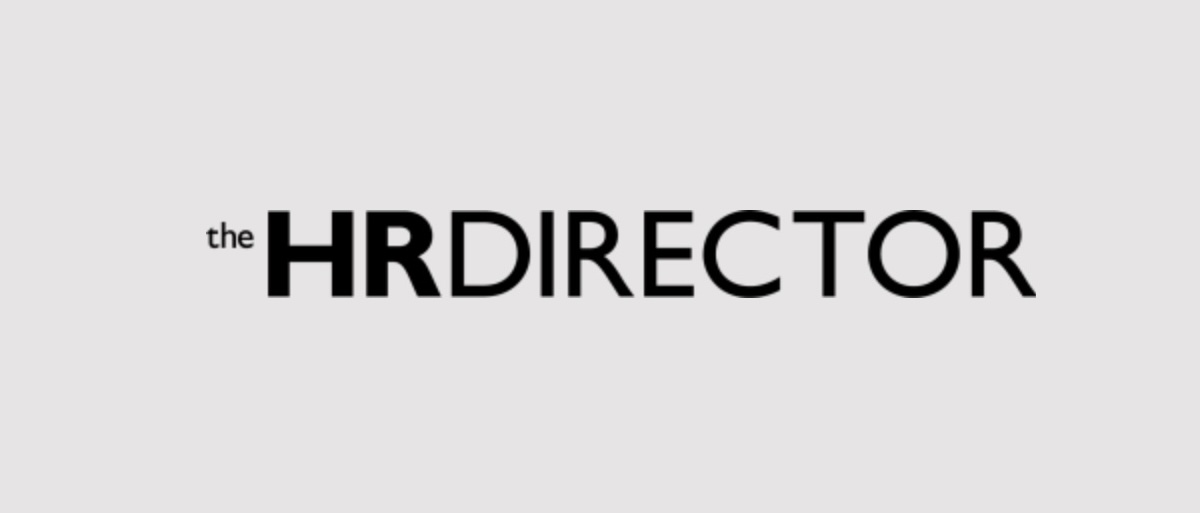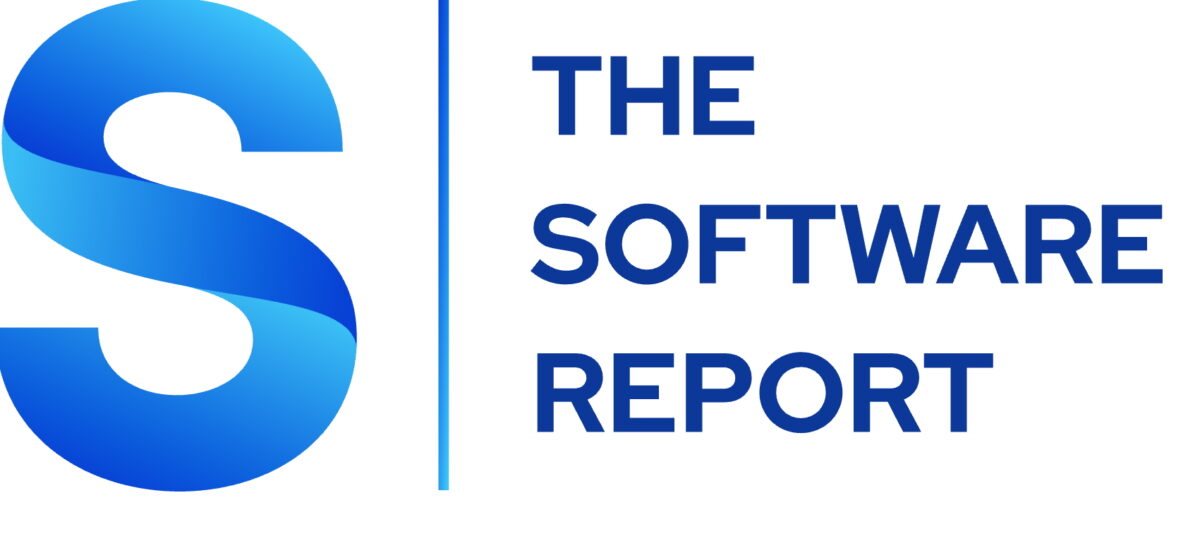Ask any employee relations practitioner and they’ll tell you: The field is critically misunderstood. Too often it’s reduced to policies, paperwork and investigations. In reality, it’s about people, culture and trust.
Every organization has employee relations, whether formal or informal. It’s the glue that holds teams together, protects the organization from risk and ensures employees feel safe, heard and valued. And if you’re not actively shaping it, your employee experience is already suffering — which is why employee relations can’t be an afterthought.
This guide will show you what employee relations really is, why it matters, the challenges you’ll face and how to intervene effectively. You’ll also learn how technology can support the process, with practical strategies to help you build a workplace that employees truly want to be a part of.
Table of Contents
- What is Employee Relations?
- What Are the Common Challenges in Employee Relations?
- What Are the Different Employee Relations Organizational Models?
- Where Does Employee Relations Fit in HR Policies and Procedures?
- What are the Benefits of Employee Relations?
- How Can Employee Relations Practitioners Handle Conflicts and Complaints Effectively?
- How do I Create an Employee Relations Strategy?
- What Are the Benefits of Using Employee Relations Software?
- How Do I Implement Employee Relations Software in My Organization?
- How Do I Measure Success in Employee Relations?
- What Does the Future of Employee Relations Look Like?
- Make Employee Relations Your Strategic Advantage with HR Acuity
What is Employee Relations?
Employee relations, or ER, is the function that brings the legal and emotional contract between employees and employers to life. At its core, employee relations is about building and maintaining trust, ensuring impartial, consistent processes and fostering a work environment where employees can thrive.
While ER is often thought of as handling policies, investigations and conflicts, it’s much more than that. Strong employee relations is not confined to one level — it spans the entire organization. From the C-suite setting the tone for leadership behaviors to individual contributors fostering collaboration, ER builds positive relationships between employees and management while shaping a culture that drives engagement and productivity.
What is the Difference between Employee Relations, HRBPs and Labor Relations?
Employee relations plays a strategic role in guiding interactions across the organization — helping leaders and employees navigate conflict, difficult conversations and relationship dynamics — while also managing critical processes such as accommodations, investigations, corrective actions and employee reporting to protect and enhance the overall employee experience.
ER professionals are specialists in managing risk, ensuring fairness and maintaining compliance through consistent processes and defensible documentation. Their work helps create a safe, transparent workplace and provides leadership with insights into trends that might signal deeper cultural or operational issues.
HR Business Partners (HRBPs) take a broader approach. They act as advisors to business leaders on workforce planning, talent management and organizational development.
While HRBPs may escalate employee issues, they typically rely on ER specialists to handle complex cases or investigations (though not in all organizations — more on that later). Usually, their focus is on aligning HR strategy with business goals and supporting managers in building teams that work well.
Labor relations, however, is a more specialized function that focuses on unionized environments. Labor relations professionals manage collective bargaining agreements, grievances, arbitration and negotiations between the organization and labor unions. Their role centers around maintaining positive relationships with union representatives while protecting the organization’s interests and ensuring compliance with labor laws and contracts.
What does Employee Relations Involve?
At its core, employee relations involves the day-to-day work of shaping how people experience an organization while ensuring legal compliance and minimizing risk.
While employee relations professionals represent the organization, their work is designed to support and protect employees as well. Employee relations involves responsibilities such as:
- Building positive relationships: Strengthening trust between employees and the organization
- Addressing workplace issues: When issues do arise, handling them consistently and compliantly
- Conducting Investigations: When a situation arises that requires deeper review, ER takes the lead — ensuring the process is compliant, impartial and thorough.
- Monitoring workplace dynamics: Spotting and addressing issues before they escalate
- Maintaining compliance: Ensuring policies and practices align with employment laws
- Analyzing Trends and Metrics: Using data from cases, surveys and reports to identify patterns, risks or opportunities to improve the workplace
- Supporting Employee Engagement and Culture: Reinforcing organizational values, promoting fairness and contributing to a positive workplace culture.
In short, ER is about more than rules and making sure people are following them. It’s about building a culture where employees feel supported, understood and empowered. Done well, ER drives engagement, performance and retention — turning it into a true strategic advantage, not just an HR function.
What Are the Common Challenges in Employee Relations?
Managing employee relations is complex, and teams frequently encounter high-stakes challenges that can impact workplace culture, productivity and legal risk. These include:
- Workplace conflicts: Tensions or disputes between colleagues, or between employees and managers, that can disrupt collaboration and morale.
- Performance issues: Employees falling short of expectations, unclear performance standards or gaps in accountability that hinder team effectiveness.
- Inappropriate conduct: Instances of harassment, discrimination or violations of company policies that can damage trust and expose the organization to legal risk.
- Compliance and legal risks in context: Navigating an evolving landscape of labor laws, regulations and internal policies while maintaining fair, consistent practices that are thoughtfully applied within the organization’s unique cultural context.
- Juggling various responsibilities: Employee relations teams are stretched thin — resources haven’t grown, yet misconduct, harassment and retaliation claims hit an all-time high in 2024, according to HR Acuity’s Annual Employee Relations Benchmark Study.
What Are the Different Employee Relations Organizational Models?
Not every organization handles employee relations the same way. In fact, there are three organizational models: Centralized, mixed and decentralized.
Centralized
In a centralized model, a dedicated team of employee relations professionals — often called a “Center of Excellence” (COE) — is responsible for managing all employee relations issues and conducting investigations across the organization. This group doesn’t have to be physically located in one place but it operates as a single, specialized function to ensure consistency and standardization.
Mixed
A mixed model combines centralized expertise with distributed support. A core ER team manages some or most employee relations cases and investigations while HR business partners, generalists or managers still handle others at the local or business-unit level.
Decentralized
In a decentralized model, employee relations issues are handled entirely within individual business units or functions by HRBPs, employee relations professionals or HR generalists. This approach provides autonomy for each line of business but can introduce variability in processes and outcomes.
Where Does Employee Relations Fit in HR Policies and Procedures?
Think of employee relations as the function that brings HR policies and procedures to life. While HR develops policies, such as codes of conduct, anti-harassment guidelines and disciplinary procedures, ER ensures those policies are applied consistently and fairly across the organization — and investigates when issues relating to them arise.
Employee relations professionals also analyze case trends and data to proactively address issues and strengthen workplace culture.
In short, ER is the bridge between policy and practice, making sure what’s written in the handbook is carried out in day-to-day operations and reinforced through consistent processes and documentation.
What are the Benefits of Employee Relations?
Employee relations is foundational to building a healthy workplace that people want to be a part of (and stick around). Here are some of the reasons why:
1. Employee Relations Helps Keep Your Best People Around
People stay where they feel respected, see opportunities to grow and trust leadership. ER makes sure expectations are clear, processes are consistent and the workplace culture actually works for employees.
Example: Turnover spikes in one team. ER discovers promotions weren’t clearly defined. Leadership sets up clear career paths and retention improves, morale bounces back and top talent stays.
2. Employee Relations Helps Build a Better Workplace Culture
A strong ER program catches problems before they explode. By listening to employees and analyzing trends, ER helps prevent misconduct and creates a workplace where everyone feels heard.
Example: Employees report harassment through a secure hotline. ER investigates and takes decisive action, showing the company takes concerns seriously — boosting trust and keeping people safe.
3. Employee Relations Helps Increase Engagement and Productivity
When employees know their voices matter and conflicts are handled fairly, engagement can improve. A culture that values inclusion and feedback keeps people motivated, productive and loyal.
Example: Surveys reveal dissatisfaction with leadership communication. ER partners with managers to launch open Q&As and town halls. Engagement scores go up, and absenteeism drops.
4. Employee Relations Helps Reduce Organizational Risk
One of ER’s core responsibilities is to protect the organization, so mishaps don’t turn into headlines. By having fair, consistent processes, organizations reduce legal risk, prevent workplace conflicts from escalating and maintain compliance with policies and regulations.
Example: A clear disciplinary process means employees know what’s expected, leadership knows how to act fairly and the company avoids costly disputes or lawsuits.
How Can Employee Relations Practitioners Handle Conflicts and Complaints Effectively?
Effective issue handling requires a consistent, compliant approach. Employee relations practitioners can leverage ER technology to guide their processes.
Some tips for handling conflicts and complaints include:
- Offer opportunities to share concerns: Create safe, structured channels for employees to report issues. Giving employees anonymous and named speak-up channels enables them to share their concerns before they escalate. These channels should also offer secure two-way communication to empower ER teams to get more information.
- Document thoroughly: Use ER technology to capture complaints, incidents and relevant details securely.
- Investigate objectively: Use your HR case management platform to gather facts impartially. Successful solutions will have standardized, best-practice embedded workflows that support consistency and ensure a clear audit trail.
- Use your data: The best HR case management tools don’t just help you close cases — they help surface hotspots and trends worth digging into so you can act proactively to protect your organization and people.
- Tap into defensible AI: AI is impacting every industry, and employee relations isn’t an exception. You can use AI to analyze case data, automate routine tasks, deliver real-time insights and enhance consistency through translation, guided intake and standardized workflows. (Note: Not all AI was created equally, so be sure you select the best AI-powered employee relations tool.)
How Can You Recognize When Employee Relations Issues Are Escalating?
Watch for red flags, including:
- Rising absenteeism or tardiness
- Declining performance or missed deadlines
- Increased complaints or conflicts
- Signs of harassment, discrimination or retaliation
If you have an effective HR case management solution, you’d also be able to check in with your data to gauge if there’s a hotspot. Your data can shine a light on issues that would otherwise stay concealed — which is exactly why getting comfortable with analytics is so important. (Don’t worry: A HR case management solution like HR Acuity doesn’t require any data expertise to make use of its comprehensive reporting!)
Example: The HR team notices a rise in anonymous reports coming from the sales team. Instead of waiting for a formal complaint, they review the reports, look for patterns and meet with leadership to address potential underlying issues. By acting early, they reduce risk and reinforce trust in the reporting process.
How do I Create an Employee Relations Strategy?
Let’s be honest: Many organizations know they need an ER strategy but aren’t sure how to build one. Here’s how to do it. (Psst: Want more information? Check out our comprehensive guide to building an employee relations strategy.)
1. Define Company Values, Vision and Mission
Clear, authentic values guide behavior, build trust and shape your organization’s culture. To begin, you’ll need to define what’s important to your org — and that starts with designating your company values, mission and vision.
How to do it: Align with leadership on these three key things. Make them visible, actionable and recognized in day-to-day work. Your employees should know what your mission statement and values are.
2. Create a Strong Onboarding Experience
Onboarding sets the tone for the entire experience employees will have at your organization. Get it right by showing what you’re about early on.
How to do it: Include clear guidance on reporting issues, culture navigation and early check-ins with mentors or buddies.
3. Foster Open Communication
Two-way dialogue is essential for building trust and engagement. Employees need safe, accessible ways to share feedback and raise concerns. A common misconception is that employee relations and speak-up reporting operate separately — but in reality, they should be tightly connected. (Want to learn why? Check out our blog about why your whistleblower hotline needs direct employee relations integration.)
How to do it: Establish transparent channels and clear response processes. Give employees multiple ways to share concerns so they can speak up however feels most comfortable to them. And make sure your speak-up hotline enables two-way communication for anonymous and named reporters — like HR Acuity’s does.
4. Ensure Fair Compensation and Work-Life Balance
Employees who feel valued and supported are more engaged and loyal. And that all starts with making sure your benefits work for your team.
How to do it: Benchmark pay and introduce meaningful perks like mental health days or birthdays off.
5. Promote DE&I and Fair Treatment
Diversity, equity and inclusion are foundational to a safe, respectful workplace. Any successful employee relations strategy has DE&I at its core. Want to learn more about improving DE&I in your workplace? Check out our guide.
How to do it: Integrate DE&I into policies, training and feedback processes.
6. Enforce Policies and Compliance
Clear, consistently applied policies protect both employees and the organization. Standardization shows employees that everyone is treated equally in the eyes of the organization, boosting trust and reducing legal risk.
How to do it: Document issues, train managers to handle employee concerns consistently and use technology to track and monitor incidents.
7. Handle Complaints Seriously and Transparently
How complaints are managed sets the tone for culture and trust. Show your team that no complaint goes unattended by acting promptly and responding appropriately.
How: Use ER case management platforms, equip managers with guidance and resolve issues consistently.
8. Gather and Act on Feedback
Regular feedback identifies issues early and strengthens engagement. If you’re not checking in with your team, you’re missing out on a valuable opportunity to get actionable information on how you’re doing so you can update your strategy.
How: Use pulse surveys, exit interviews, focus groups and ongoing check-ins. Analyze trends and adjust strategies.
9. Track Metrics and Measure Impact
Data-driven insights help you spot problems before they escalate. But we get it — pulling metrics from spreadsheets and multiple systems can be a pain. That’s why you need employee relations software that makes tracking metrics and measuring impact effortless.
With HR Acuity, you get drag-and-drop dashboards that require no data expertise. You can track key KPIs easily and instantly visualize trends to guide decisions. Plus, with olivER, our AI-powered companion, you can ask questions about your data and generate easy-to-understand visuals in seconds.
How: Track key KPIs like case volume, resolution times, employee satisfaction and engagement. Use dashboards to visualize trends and guide decisions.
10. Continuously Evolve Your Strategy
An ER strategy is never truly “finished.” Regular reviews keep it relevant and effective. (Pro tip: When HR Acuity’s Annual Employee Relations Benchmark Study is released, it’s the perfect time to revisit your strategy and see how your function stacks up!)
How: Hold consistent check-ins, review scorecards, gather feedback and share results transparently with your team.
What Are the Benefits of Using Employee Relations Software?
This era of employee relations — with record-high cases of retaliation, discrimination and harassment — requires precision and consistency. Yet many HR teams still rely on fragmented tools and inconsistent data, opening the door to costly legal risks and eroding employee trust. The solution? Dedicated employee relations software that centralizes case management, guides investigations and delivers real-time insights.
The right ER software doesn’t just simplify HR tasks — it strengthens decision-making, improves employee satisfaction and boosts organizational performance. Here are the key benefits:
- Centralized Case Management: All communications, evidence and case notes live in one secure platform. No more scattered files or spreadsheets. Instead, you get a single source of truth.
- Consistency in Investigations: Guided workflows and customizable templates ensure every issue is handled fairly, thoroughly and in compliance with policy and law.
- Improved Compliance and Risk Mitigation: Role-based access, defensible documentation and auditable records reduce legal exposure and protect your organization’s reputation.
- Enhanced Employee Trust and Engagement: Employees are more likely to raise concerns when they see consistent, confidential and fair processes in action.
- Real-Time Analytics and Reporting: Dashboards surface patterns, trends and risks so HR can act proactively and address systemic issues before they escalate.
- Proactive Prevention of Issues: Advanced analytics and benchmarking help identify trends, track root causes and prevent future complaints.
- Seamless Integration with HR Systems: Smooth connection with existing HRIS platforms like Workday, SAP or UKG ensures accurate employee data without extra work for your team — a win-win.
- AI-Powered Assistance and Automation: AI tools support efficiency, provide actionable insights and help teams focus on high-value, human-led decision-making.
By implementing the right ER technology, teams can move beyond reactive management and spreadsheets, creating a modern, consistent and defensible approach to employee relations that benefits employees and the organization.
How Does Employee Relations Software Reduce Risks and Improve Decision-Making?
Employee relations software reduces risk and improves decision-making by consolidating historical and real-time case data in a single platform, enabling teams to identify trends, patterns and hotspots across the organization.
AI-powered analytics uncover root causes of issues, highlight recurring concerns and provide actionable insights, allowing ER to act proactively rather than reactively.
Comprehensive employee relations software, like HR Acuity, also provides benchmarking against similar organizations, customizable dashboards and intuitive reporting tools, helping ER compare performance, track progress and make data-driven decisions with confidence. AI companions like HR Acuity’s olivER automate analysis, generate visual insights and streamline task management, ensuring decisions are informed, defensible and timely.
How Can Software Improve Communication Between HR, Managers and Employees?
Software like HR Acuity’s managER goes a step further by equipping managers to communicate effectively with employees. Since most employees (61%) first bring issues to their managers, giving people leaders the tools to handle conversations, document behavior and follow structured processes ensures communication is consistent, clear and compliant.
With these tools, managers get:
- Step-by-step guidance for performance or behavior conversations
- Templates and prompts to standardize messaging for reliable, accurate documentation
- Full visibility into employee history and policies
- Built-in collaboration and visibility with the HR team
- Structured performance improvement plan (PIP) support with transparent next steps to ensure clear communication between manager and employee
The result? Faster, more accurate communication, early intervention on issues and a culture where employees feel heard, supported and aligned with HR and management.
What Impact Does ER Software Have on Employee Satisfaction and Retention?
Employee relations software doesn’t just manage cases — it builds trust, engagement and retention. When employees know their concerns will be handled consistently, they’re more likely to stay engaged and speak up.
The impact is measurable, according to HR Acuity’s Misconduct Study:
- Investigated issues boost referral rates to 42% (1.4x higher than uninvestigated cases).
- Issues that are reported, investigated and resolved raise referral rates to 56%, and employees are 1.4x more likely to report future concerns.
This shows a single well-handled case can improve satisfaction and retention — employees trust that future issues will be treated the same way.
By centralizing complaints, standardizing investigations and providing transparency, ER software helps organizations create a safer, more productive workplace where employees feel valued and heard.
How Do I Implement Employee Relations Software in My Organization?
Implementation is critical to success. Even the best software fails if employees and HR don’t adopt it correctly. Done right, implementation not only ensures smooth adoption but also transforms how your organization handles complaints, investigations and reporting — making processes more consistent and fully defensible.
What Steps Do I Take to Implement Employee Relations Software Successfully?
Implementing employee relations software successfully requires strategy, clear goals and ongoing support. Some of the success hinges on your internal team, and some on your software partner. A thoughtful approach ensures the platform delivers real value, drives adoption and strengthens your HR processes.
Key Steps for a Smooth Implementation:
- Define Goals and Success Metrics: Start by identifying what success looks like for your organization. Are you aiming to reduce case resolution time, improve reporting accuracy or standardize investigations? Clear metrics allow you to track progress and demonstrate ROI.
- Map Current Workflows and Identify Gaps: Understand how cases move through your organization today. Identify bottlenecks, manual steps and areas where consistency or compliance may be lacking. This ensures the software is configured to support your real-world needs. (Your employee relations software should be customizable, but should also have best-practices embedded, so there may be slight tweaks to your current processes.)
- Roll Out the Platform with Clear Training and Communication: Engage your team early with hands-on training, guides and best practices. Communicate the benefits and expectations to ensure everyone understands how to use the platform effectively.
- Monitor Adoption and Adjust Processes as Needed: Track usage, gather feedback and refine workflows. Automation and reminders can help ensure team members consistently log updates and follow standardized procedures.
Example: Before implementation, a company noticed complaints were taking too long to resolve. By configuring the software to automate notifications, track deadlines and standardize investigation steps, they addressed their key pain points, reduced resolution time and increased consistency across cases.
How Do I Measure Success in Employee Relations?
Measuring success in employee relations goes beyond counting cases closed. It’s about understanding whether your HR practices are improving workplace culture, reducing risk and creating a consistent, positive experience for employees. Focusing on a few meaningful metrics — tracked accurately over time — is far more effective than trying to monitor dozens of indicators poorly.
What KPIs Should I Track to Measure the Effectiveness of Employee Relations Practices?
To understand how well your employee relations efforts are working, focus on a few key metrics rather than trying to track dozens poorly. Core KPIs include:
- Case resolution time: How quickly issues are addressed from intake to closure.
- Number of repeat complaints: Identifying recurring problems that signal systemic issues.
- Employee engagement and satisfaction scores: Gauging how workplace culture and trust are impacted.
- Retention rates in high-risk teams: Measuring whether interventions help keep top talent.
For example, by tracking complaint resolution time, HR can pinpoint bottlenecks, streamline workflows and allocate resources more effectively.
But good news: You don’t have to do it all yourself. With dedicated ER software, tracking these metrics becomes seamless — dashboards, alerts and automated reporting make it easy to monitor trends, surface risks and ensure continuous improvement without drowning in unnecessary data. Some employee relations software, like HR Acuity, even offers benchmarking in-platform so you can see how your function compares to other orgs of a similar size or in the same industry.
Psst: Want to learn more about KPIs you should follow to measure employee relations effectiveness? Check out our comprehensive guide of must-track employee relations KPIs here or dive into the HR Acuity Ninth Annual Employee Relations Benchmark Study, which centers around the importance of tracking KPIs.
What Does the Future of Employee Relations Look Like?
Employee relations is entering a new era. Remote work, evolving employee expectations and artificial intelligence are changing how organizations prevent, detect and resolve workplace issues. Here’s what the future may look like.
1. AI is Transforming Employee Relations
Technology is shaking up how ER teams work, but it’s a helper, not a replacement.
For instance, AI can help your team spot patterns earlier. AI-powered analytics can help your team notice trends in engagement, absenteeism or feedback before they become bigger problems.
Another way AI can help is by freeing your team up for strategic work. AI can generate tailored interview questions, create executive-ready summaries for stakeholder alignment (without labeling cases), assist with consistent documentation and even translate language so employees can report issues in the way that works best for them. This lets ER teams focus on what really matters: Strategic work.
The key: AI is smart but it doesn’t understand the nuance of this work like humans do. It can help you work faster and more efficiently, but it should never make decisions for you or label people or cases. Human judgment, empathy and context are essential and always will be.
2. Employee Relations Software Becomes Increasingly Critical
Modern ER software does more than track cases. With claims of retaliation, discrimination and harassment reaching an all-time high in 2024, it has never been more important. It empowers teams to act consistently, proactively and strategically:
- Central hub for case management and insights
- Standardized, defensible investigation workflows
- Analytics enabling swift trend detection
- Embedded AI to catch issues early while keeping humans in control
3. Remote Work Challenges
Distributed teams make it harder to spot issues. Misunderstandings rise, engagement dips can go unnoticed and maintaining consistency across teams becomes challenging. ER must adapt by:
- Offering virtual reporting channels
- Making policies easy to access digitally
- Monitoring engagement and conflicts remotely
- Ensuring fairness and consistency across all teams
Make Employee Relations Your Strategic Advantage with HR Acuity
When employee relations is proactive, consistent and data-informed, it helps prevent issues before they escalate, reinforces fairness and strengthens trust across the workforce. When it’s an afterthought, you can see the effects — low retention, eroding trust and poor engagement are often the outcome.
With HR Acuity’s AI-powered platform, your team can move beyond reactive case management to turn employee relations into a strategic advantage. By combining actionable AI-driven insights, digestible trend analysis and best practice-embedded workflows, ER professionals can make informed decisions, support leaders more effectively and continuously improve the employee experience.
Ready to see how HR Acuity can help bring you into the next era of ER? Get a demo today.




